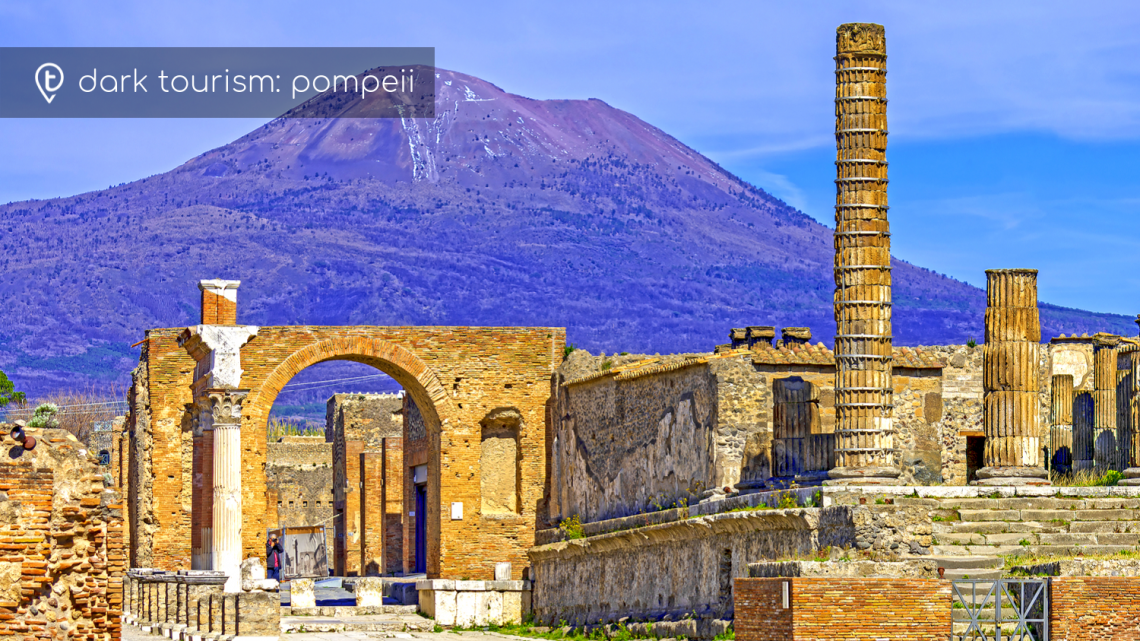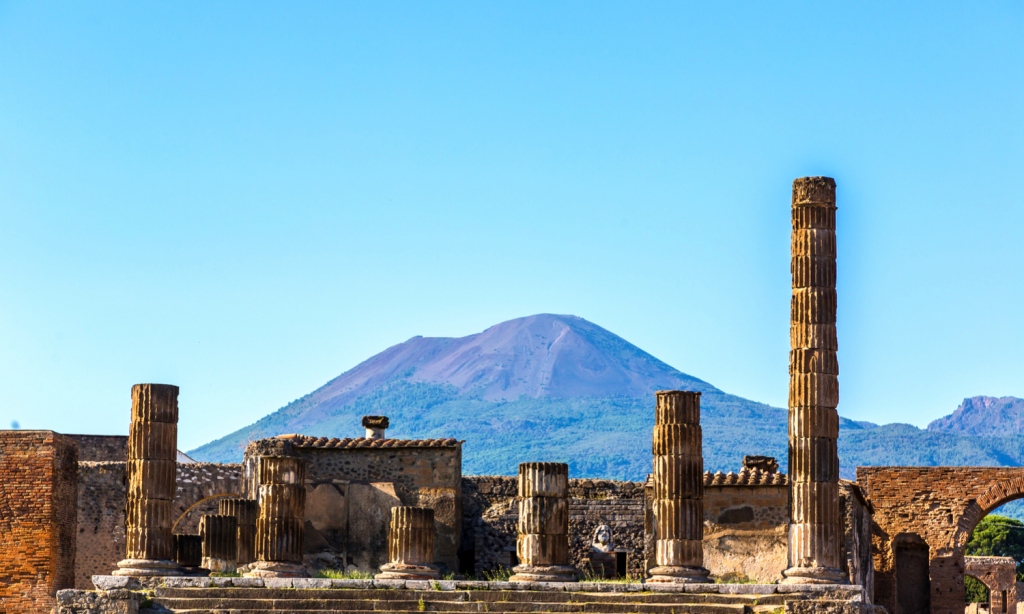
Petrified Pompeii
Italy was the metropole of the Roman Empire. Where Rome has the Colosseum, the Sistine Chapel, and the Trevi Fountain, few things inspire a fascination with the Romans than Pompeii; the city frozen in time.
Normally the passing of time brings evolution, with each generation molding the landscape and leaving their mark on top of the previous. Pompeii is different. Nestled in the shadows of ominous Mount Vesuvius, this lifeless city has never evolved, rather it was in 79AD what it would always be…
Once a bustling, prosperous Roman town, Pompeii is now one of the most important archaeological sites in the world. Tragically buried under layers of volcanic ash and forgotten about for centuries, Pompeii today offers a unique, relatively well-preserved glimpse into life in the first century.

Visiting Pompeii
There is a lot to see within this unique site, and if you’re wanting to indulge your inner Indiana Jones and explore everything then you’re best accommodating a couple of days to the ruins. However, there are areas that are better preserved than others as well as popular hot spots so if you just want to see the highlights, you’ll only need a day.
Many people who visit Pompeii do so as part of a guided group or private tours, but self-guided tours are also possible. For a map of the site click here and for your written guide to Pompeii’s excavations click here.
To ensure you get the most out of your Pompeii visit, here are tripsology’s top-see destinations to explore in this walkable time capsule of the Roman Empire.

House of the Faun
Pompeii was a rich, merchant city. Inhabited by wealthy Romans who were known for lavish spending on their homes; there is no better example of this than the House of Faun. Named after the. statue in the front courtyard and built-in 200BC it’s one of the most complete surviving examples from the time. Not a site to be missed!
The Garden of Fugitives

When the ruins of Pompeii were being excavated in the 18th century, plaster casts were poured into the crevices where human remains had been removed. These casts, frozen in an unnerving and agonizing tableau demonstrate the disastrous demise of the city. They are both fascinating and unsettling at the same time.
With these ‘petrified’ bodies giving Pompeii it’s ‘dark tourism’ appeal, the Garden of Fugitives makes you consider that where ‘Mother Nature is generous, she is also unforgiving’.

“When this wasteland regains its green, will men believe that cities and peoples lie beneath?”
Statius- Roman Poet
The Forum Baths
This historical period left behind many ruins of Roman Baths (indeed, there is a UK city named after them!) yet few are as well preserved or as impressive as Pompeii’s forum baths. You can not only see the innovative heating methods but also architectural elegance. When visiting, it is hard not to visualize the baths as they were.
Amphitheatre
As the oldest known amphitheatre in the Roman world, this site should not be missed! The stands could hold up to 20,000 people, coming to watch an afternoon of violent entertainment.
The House of the Tragic Poet
Aside from the amazing, and eerily relevant, name this house is one of the most famous on the site. The small mosaic of the dog above the words “Beware of the Dog” perhaps suggests that the ancient Romans of Pompeii weren’t so different to us today- except for the fact this sign far more opulent than anything the local garden centre could offer.
Forum Granary
According to archeologists, Forum Granary was once used as the fruit and vegetable market but now displays the archeological fruits (see what I did there) uncovered beneath the ash. Hosting more than 9000 items from pots, jugs, tables, and baths- it is well worth checking out to see some of the best artifacts of this frozen city.
The House of the Small Fountain
Don’t let the adjective ‘small’ in the name trick you, this stunning house with a large back room and fancy mosaics was in fact owned by someone who was a little bit loaded.
The design of Pompeii’s houses teaches us a lot about innovation in the ancient Roman period, with the sloped roof used to collect rainwater for drinking and to use in the fountain. A true eco-house. We stan.
The Villa of Mysteries
Despite what the name suggests this is not some kind of creepy escape room. Situated slightly out of the way, this ruin hosts some incredibly vibrant and well-preserved frescoes. With Greco-Roman features, this destination is definitely worth checking out!
The Brothel
This ancient brothel is a tiny house with stone beds and some seriously risque frescoes. As one of the most visited houses in all of Pompeii, it is best to get there early to avoid the crowds. It was probably just as popular before the eruption too…
Things to Note Before Visiting
- You can only enter the site with a small bag (30x30x15cm max).
- Not all the attractions are open year-round so be weary of seasonal closings.
- Bring lots of water- Italy is hot and places to get refreshments are few and far in-between.
- Bring suncream- a lot of the site is uncovered so protect yourself from those scorching rays.
Pompeii is such an important historical site and should be on everyone’s bucket list.
When wandering through these distinct ruins, ask yourself this question. When Mount Vesuvius blew its firey top, did it destroy Pompeii or preserve it? Or did it do both?
How has something so struck with catastrophe ever felt so complete?